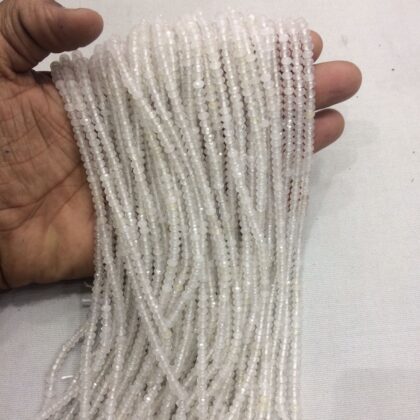Material:
- Yellow: Given the small size, roundel shape, faceted cut, and price point, these beads are more likely agate treated to resemble yellow gemstones rather than natural yellow agate.
Why are natural yellow agate beads uncommon?
- Agate forms in a variety of colors due to mineral inclusions and impurities. Yellow is a less common color because the minerals that cause it are less frequently present during agate formation.
What to consider:
- Price: Natural yellow agate, especially at this size and quantity, would likely be more expensive than dyed agate.
- Transparency: Natural yellow agate can sometimes have a slightly translucent quality, while dyed agate may be more opaque.
Possible scenarios:
- Dyed Agate: The beads are likely agate dyed to achieve a yellow color. This is a common and cost-effective way to obtain yellow agate beads.
- Heat-Treated Agate (Less Likely): In some cases, natural agate can be heat-treated to enhance its yellow color. This is less common than dyeing, but it’s possible, especially for a slightly higher price point.
- Genuine Natural Yellow Agate (Least Likely): It’s possible, but less likely, that the beads are genuine natural yellow agate, especially if the price is very affordable.







